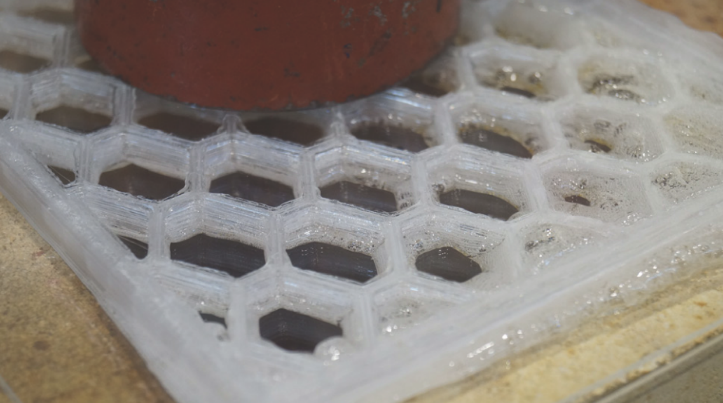Ultra Thin Composite Panel – An Exploratory Study on the Durability and Stiffness of a Composite Panel of Thin Glass and 3D printed Recycled PET
DOI:
https://doi.org/10.7480/cgc.7.5051Downloads

Abstract
This paper investigates the stiffness and the durability of a composite panel that consists of thin glass as outer layers and a 3D printed core element from recycled PET. Thin alumino-silicate glass, mostly used for displays in computers, tablets and smartphones, is known for its flexibility, durability and high bending strength. However, for building applications, the high flexibility of thin glass may cause serviceability issues. Therefore, to stiffen thin glass, a composite concept of thin glass with a 3D printed core is developed. The core element of this panel consists of 3D printed recycled PET. The use of recycled PET has been taken into account, due to the increase of plastic waste for the next 30 years. A combination of both materials allows for a much stiffer composite panel and reduction in weight of 71,9 % compared to a normal double glazed window panel. This paper presents an overview of the durability of the composite panel. The durability aspects for this exploratory study are UV radiation, elevated temperature and fire. The UV radiation tests showed that the applied acrylic adhesive ensures for a good adhesion, which allows reaching high load bearing capacity. Also, these tests showed that recycled PET changes into a yellowish color and becomes more brittle. The temperature tests showed that at an elevated temperature of 80 ⁰C, recycled PET loses its stiffness and strength and cannot sufficiently take up forces when loaded. The fire experiments showed that the recycled PET core melted fully during the fire exposition.
Published
Issue
Section
Hybrid & Composite Glass Components
Keywords:
Thin Glass, Recycled PET, 3D printing, UV radiation, Elevated Temperature, Fire, Honeycomb pattern, Truss PatternLicense
Copyright (c) 2020 Charbel Miled Nohra Saleh, Christian Louter, Michela Turrin

This work is licensed under a Creative Commons Attribution 4.0 International License.



